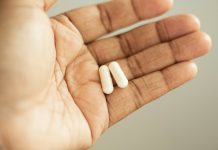
Coronary artery disease (CAD) is a major cause of illness and death worldwide, and understanding the treatment options available can be life-saving.
CAD occurs when the arteries that supply blood to the heart muscle become hardened and narrowed due to the buildup of cholesterol and other materials on their inner walls.
This can reduce blood flow to the heart, leading to chest pain, shortness of breath, and other symptoms. If the blood flow is significantly blocked, it can result in a heart attack.
The treatment of CAD focuses on reducing symptoms, slowing the progression of the disease, and lowering the risk of heart attacks and other complications. Treatments range from lifestyle changes and medications to more invasive procedures like surgery.
Lifestyle Changes: The foundation of any treatment plan for CAD includes lifestyle modifications. These changes can help manage the risk factors that contribute to artery damage.
Quitting smoking, eating a heart-healthy diet (low in fats, cholesterol, and sodium), maintaining a healthy weight, exercising regularly, and managing stress are crucial steps. These changes can help slow the progression of CAD and even reverse some risk factors.
Medications: Several types of medications are used to treat CAD. Antiplatelet drugs like aspirin can prevent blood clots, which are a major cause of heart attacks.
Cholesterol-lowering drugs, particularly statins, are used to decrease cholesterol levels and reduce plaque buildup in the arteries.
Blood pressure medications help manage hypertension, a significant risk factor for CAD. Lastly, nitroglycerin and other similar medications can help dilate blood vessels and alleviate chest pain.
Angioplasty and Stent Placement: When lifestyle changes and medications are not enough to control CAD, a procedure called angioplasty might be recommended. During this procedure, a thin tube with a balloon at its end is threaded through a blood vessel to the blocked artery.
The balloon is inflated to open up the artery, and often, a small wire mesh tube called a stent is placed to keep the artery open. This procedure restores blood flow and can relieve symptoms of CAD.
Coronary Artery Bypass Grafting (CABG): For severe cases of CAD, coronary artery bypass grafting, or bypass surgery, may be necessary. This surgery involves taking a blood vessel from another part of the body and using it to reroute blood around a blocked artery in the heart.
This allows more blood to reach the heart muscle. CABG is one of the most common and effective surgical treatments for severe CAD and is typically considered when multiple arteries are blocked or when angioplasty is not successful.
Enhanced External Counterpulsation (EECP): For some patients who cannot undergo invasive procedures, a non-invasive therapy known as EECP can be an option.
This treatment involves wearing cuffs on the legs that inflate and deflate synchronously with the heartbeat. This process increases blood flow to the heart and can reduce symptoms of chest pain.
Research and development in treating CAD are ongoing. New medications, improvements in surgical techniques, and innovative treatments like gene therapy are under investigation.
These advancements promise even better outcomes for patients with coronary artery disease in the future.
In summary, treatment for coronary artery disease involves a comprehensive approach including lifestyle changes, medications, and possibly more invasive procedures depending on the severity of the disease.
With the right treatment plan, individuals with CAD can manage their symptoms effectively and live healthier lives.
It’s important for anyone with CAD or at risk for heart disease to work closely with their healthcare provider to determine the best treatment strategy tailored to their specific needs.
If you care about heart disease, please read studies about a big cause of heart failure, and common blood test could advance heart failure treatment.
For more information about heart health, please see recent studies about a new way to repair human heart, and results showing drinking coffee may help reduce heart failure risk.
Copyright © 2024 Knowridge Science Report. All rights reserved.



